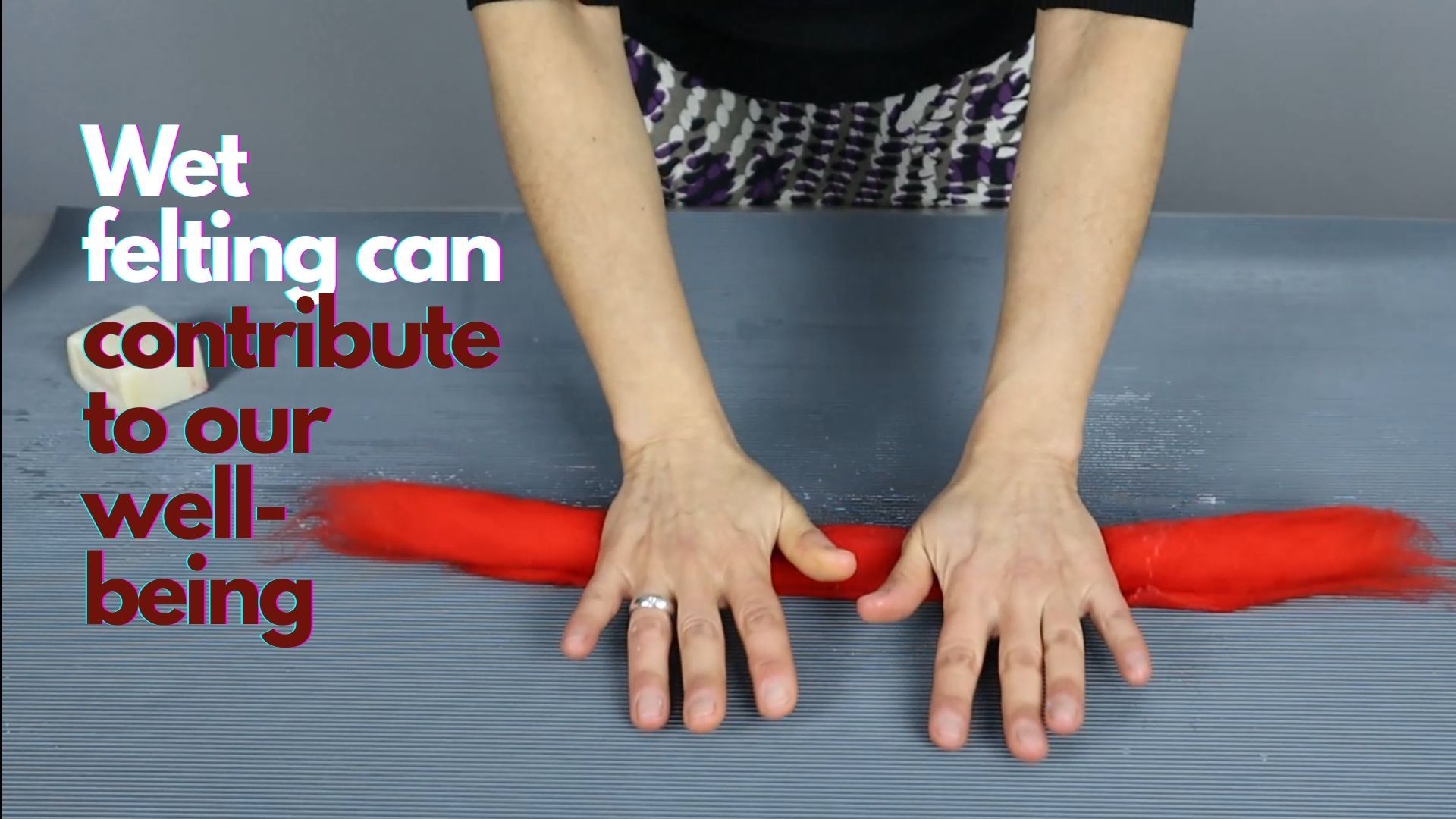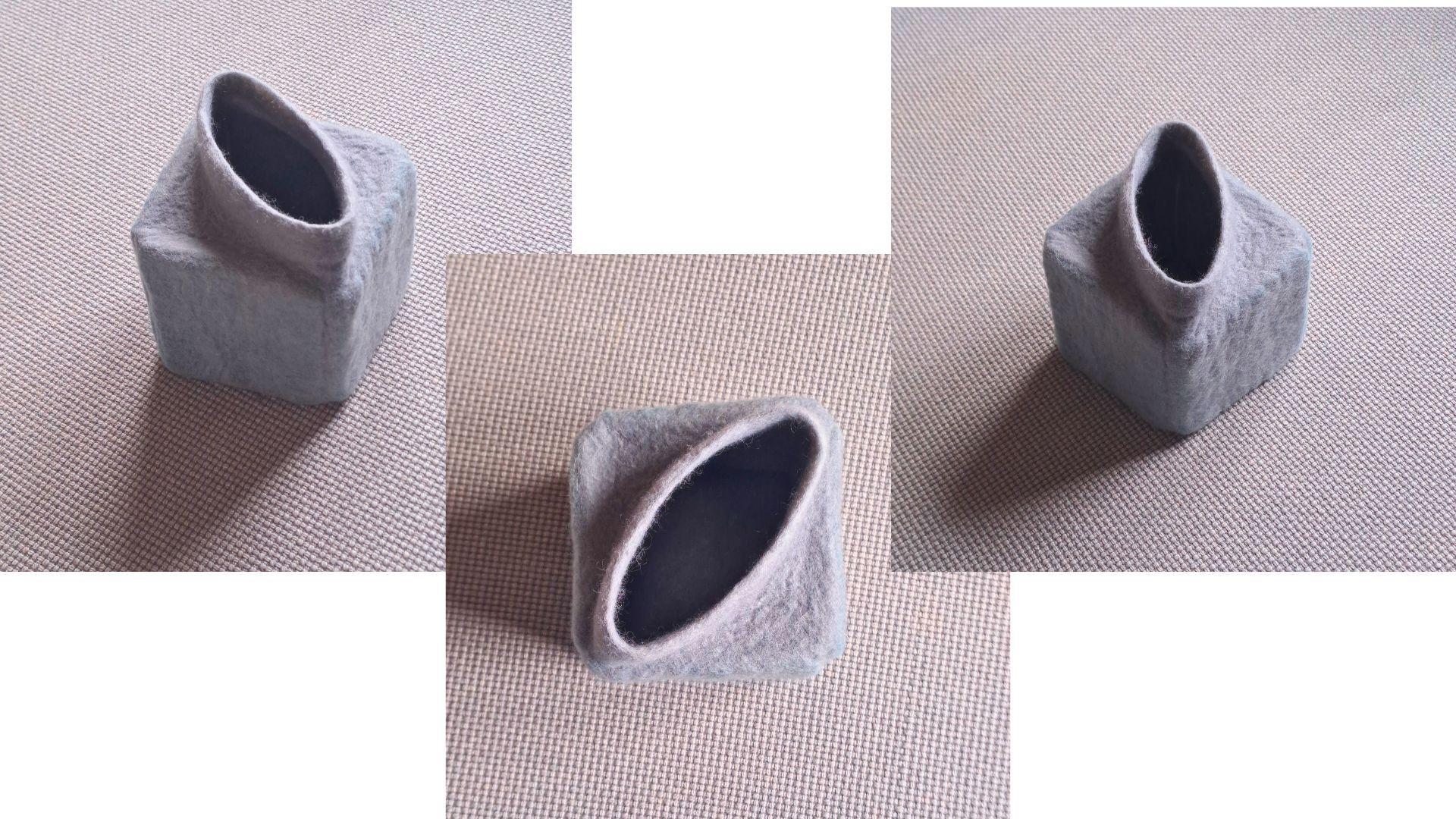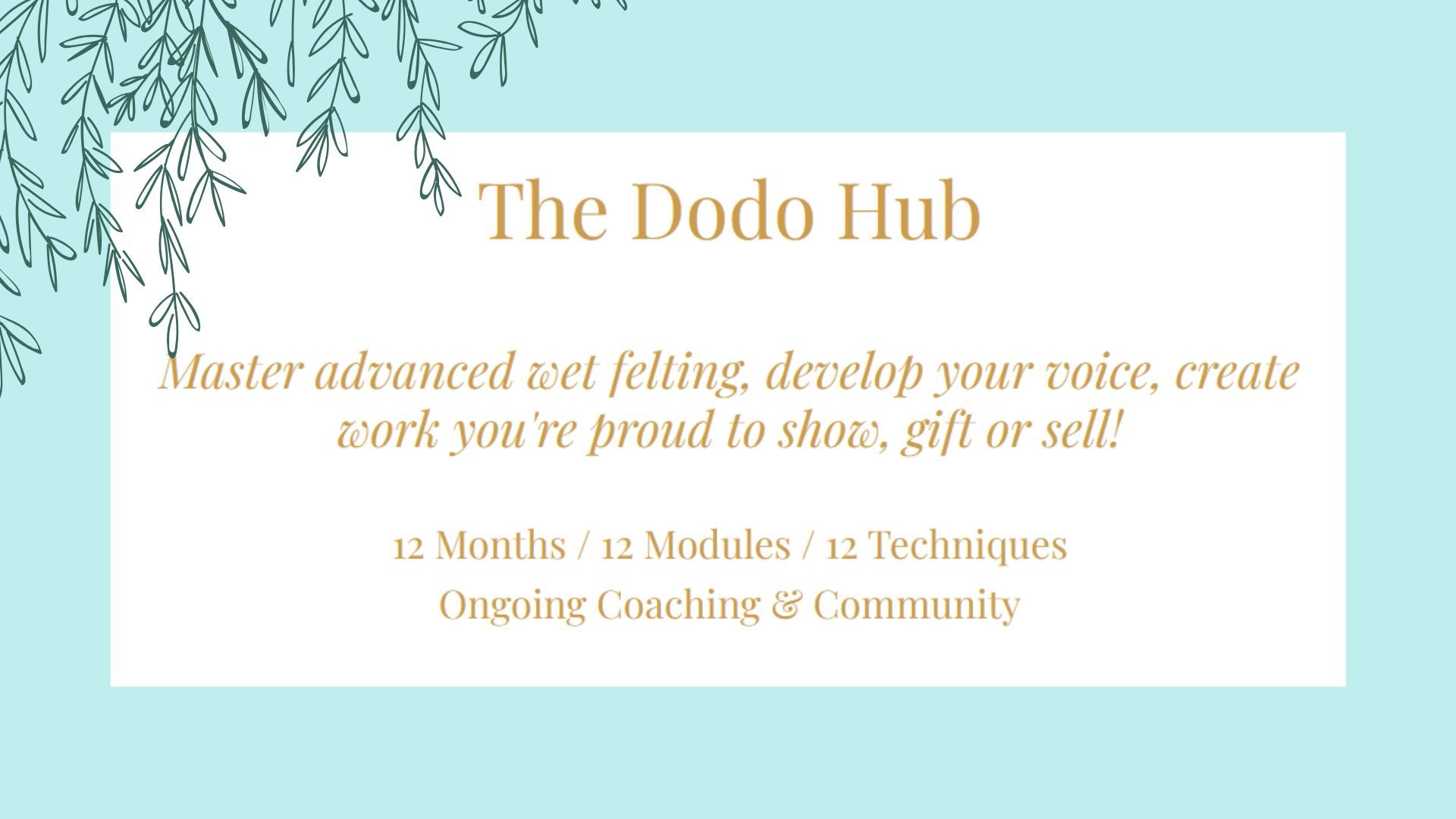The Dodo Blog
As the year comes to a close, I wanted to share a piece I made recently: a wet felted goldfish. I felted it based on the fish masterclass by one of my favorite felt artists, Maria Friese (@maria.friese.art). In this masterclass, Maria leaves room for each student to choose any type of fish. I chose ...
Looking for a new creative challenge?
I’ve got you covered!
Until Sunday, October 5th, get the class STAR ANISE SEED POD for only 99€. That’s 30€ off the regular price!
This is an exclusive offer for newsletter subscribers. So, if you’re on the email list, please check your inbox for this special...
Wet felting contributes to our well-being and it can even be therapeutic. It’s been used in the Waldorf method for a long time to cultivate the connection to Nature through a natural material, to engage the senses, develop fine motor skills, concentration and creativity in children.
If you’ve been ...
Last week we started looking at how the felting and fulling methods you choose for your wet felted project affect the outcomes and the quality of your felt.
We made a sample with a fine merino layout and viscose on the surface, that we felted using gentle methods.
This week, we’re trying much more...
We’ve started a little tradition in The Dodo Hub: once a month we hop online and felt together. Lately, the challenge has been about the circle. We grab a round resist, and experiment with the techniques from the program.
You can felt anything you’d like to try, as long as you start with that circl...
Felting and fulling methods. You’ll see different felt makers using different ones, and this may have raised the question for you: Is it really that important which ones you choose to use? I mean, they all produce felt, right?
Well, yes, I guess that’s right. But choosing the right felting and full...
I’ve spent years felting berets and trying to get them to be soft and wearable. Along the way, I tested materials, methods, and fiber ratios until I found what I was looking for.
The course FELTING SOFT HATS – THE BERET distills those experiments, based on trial and error, into a clear, practical ...
If you’ve ever wet felted a beret, you might relate to this frustration: no matter how thinly you lay out your wool, the result turns out too stiff; even with fine merino, the beret never really drapes the way you want.
I know, because I went through the same thing for years.
That got me into a lo...
Today, I want to talk to you about something that makes felt makers a little bit nervous: the S word. SAMPLES!
While I know most of us would do anything to avoid making samples before we felt a piece, I’m – once again – going to try to persuade you to make them.
Now, when we talk about making sa...
Have you ever had periods of time when you seem completely unable to have any new ideas? No good ones, no bad ones, nothing.
You sit in your studio, you tidy up, you go through your wool, through books, through images and notes you’ve been collecting for future projects, and still nothing comes up...
It’s great to be back again with you after a pause of about a month :)
Last time we spoke, I told you I was going to take a break to rest and spend time with family and friends, as well as to consider what the lesson plan would look like in the second part of the year.
So, here’s an idea of what...
If you’ve been waiting for the registration to THE DODO HUB to open, I’ve got good news. You can now sign up here.
WHO IS THE PROGRAM FOR?
You’ve been a felt maker for some years now, but …
- you feel like you’ve reached a plateau, and you don’t know how to develop your work further;
- you wan...






